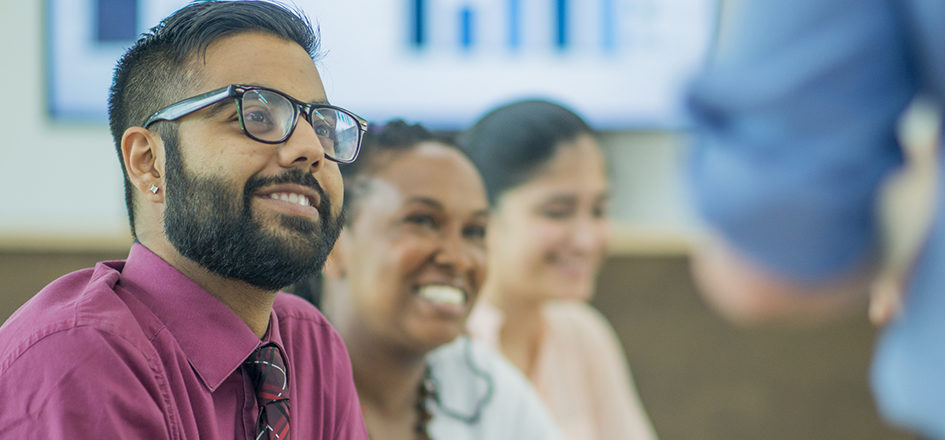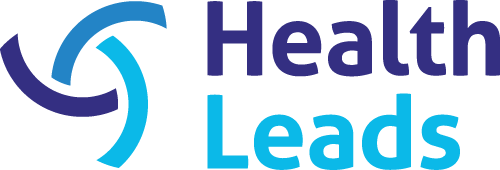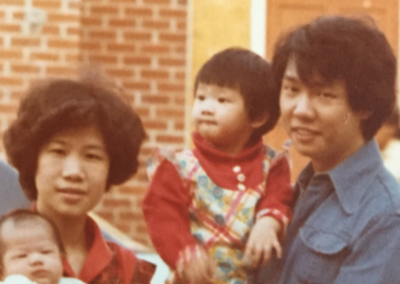We Need a Community-based Essential Resource Workforce – And The Training To Support Them

Volunteers, advocates, and others are responding to the economic fallout of the pandemic – and their training will be critical. Built on 20+ years of testing, our Workforce Training Guide can help.
Today, communities across the country are scrambling to meet the increasing demand for essential resources like food, housing, and employment due to the COVID-19 pandemic. Organizations like hospitals, food banks, public health departments, and community-based organizations are finding creative ways to build and expand workforces – some are leveraging college student volunteers, working with AmeriCorps programs, rehiring former staff, and redeploying current staff to meet these needs. Additionally, the existing staff has been forced to transition in-person interactions to the phone or virtual platforms. But creating a new workforce or even adjusting an existing one is no easy task, and comes with a range of challenges. As a result, requests for curriculum and expertise to train these teams in connecting people to essential resources are at an all-time high.
Health Leads has a long history of workforce training. We began by training college volunteers to support health systems and clinics that were overwhelmed by the social and environmental impacts on people’s health. When I joined the organization in 2012, training continued to be integral to our approach to demonstrating to the healthcare sector that connecting people to essentials like food, heat, and housing both should and can be done as part of quality care. As the concept took hold across the country, we expanded our training beyond volunteers to other workforces, including community health workers, and clinical staff, including medical assistants and social workers.
By making our core Workforce Training Guide widely available today, we hope to support and accelerate the number of people deployed to respond to the essential resource crisis that’s only just begun. Over our (20+!) years, we continually enhanced our curriculum based on ongoing learnings from our trainees, individuals and families, health system, and community partners. Below are five key takeaways that have influenced its evolution and will result in a training that is relevant to your audience.
- Gather and consider input from key stakeholders prior to building out training. Engage the individuals and families your organization will work with and the target workforce early on. It’s important to understand what the community would like to see in the staff or volunteers. For example, feedback that we often hear from patients is they feel disrespected and disengaged when staff asks them questions without being personable and making eye contact. Based on this input, our curriculum focuses on soft skills, like motivational interviewing and active listening – teaching participants how to have a conversation with patients in a manner that is engaging and builds trust and rapport.We have heard from teams that they want to feel equipped to find resources and key information; they want to feel confident when working with individuals and families. A sense of confidence will help them feel more comfortable conversing with individuals and families and support trust-building. Our “Roles & Responsibilities” section enables trainees to understand their role and that of other members of the team – so that they know they are not doing this work alone, they are not required to know EVERYTHING, and they can lean on their team members. We also include role-playing activities, so that they are able to practice having conversations with clients as an approach to screening for their social needs and using the available tools (resource database, google doc, listing) to navigate the individuals and families to resources.
- Reinforce the “why” for your essential needs program. Too often organizations approach screening for essential needs as just another questionnaire that team members are required to administer to individuals and families without much explanation about the reason the questions are being asked. We begin our training with a thorough explanation of the impact these efforts can make and the important role that the participants play in making the program a success. This section is ideally presented by leadership and reinforced by the direct supervisor. This helps establish understanding and begins to develop buy-in. The reality is that connecting patients to essential resources often requires a significant shift in how staff thinks about their responsibilities and the individuals and family partners they work with. Significant change management is key for staff to engage with the program. This, coupled with comprehensive training, can lead to high engagement from individuals and families – disclosing essential needs, using provided resources, sharing feedback on resources, and reporting progress. This high engagement will lead to key findings related to the desired outcomes of the program.
- Ensure participants understand their local communities. Exercising cultural humility is critical when working with individuals and families. Cultural humility requires us to acknowledge that we are not experts of other cultures and pushes us to reflect on our own cultural biases. To do this, teams need to understand the historical context of the communities they partner with and learn from the individuals and families about their culture, as they are the experts – and this is especially important when your workforce does not reflect your client population. The historical context can help your team understand the pervasive systemic inequities rooted in the drivers of health, which can help address biases that team members may have regarding the community. For any team to effectively connect with individuals and families, they need to understand cultural norms and preferences.A few years ago, I trained a team that was deeply concerned about the number of families in danger of having their utilities disconnected and they wanted to help as they understood the harmful impact this could have on the health of families. The solution they identified was money management classes for the parents/guardians, they thought if only they could better manage their money they would not be in this situation. Because I hired someone who was from and familiar with the communities where the patients resided, through training, we were able to leverage her lived experience to help the team understand the lingering impact that redlining and racial segregation has had on the overall health of these communities, their financial, physical, social, and environmental health. She also helped them understand the obstacles that families experience with billing (i.e. being billed for another apartment) and the challenges with navigating programs that provide support. This resulted in the team thinking of ways they could impact the systemic challenges experienced by families. They went from placing the entire weight of this problem on the individuals and families to exploring solutions with them that could get to the root of the issue. They also learned that it is difficult for many in this community to ask for help, they pride themselves on being resilient and hard workers. So our trainees learned how to frame the program and resources in a way that acknowledges and leverages their patients’ strengths.
- Recognize the host of strengths that individuals and families have. Teams should recognize the resilience and valuable lived experience that individuals and families bring to the table as they partner with them to improve their health. They know their communities and needs best, and teams have an opportunity to leverage their expertise as they work in partnership with them to address unmet essential needs. Oftentimes, the individuals and families we partner with know the resource landscape, both informal and formal, better than we do because they have experienced navigating it. Our programs have benefited from including their guidance and perspective. A section of our training teaches participants how to identify the strengths and assets of individuals and families as they develop an action plan together. The action plan includes priorities determined by the individual or family and our training includes details on how to support them in making these decisions regarding their health.
- Follow up training and check-ins are important. No matter how comprehensive your initial training is, we have learned that the best training experience happens when team members start doing the work. This is when they will develop additional questions, recognize where they excel, and identify opportunities for growth. This offers a team that leads an important opportunity to hone the strengths of team members and support their development. This is key for professional growth, employee/volunteer satisfaction, and the enhancement of the larger team. As team members adjust to this new approach of working with individuals and families, these regular check-ins will allow direct supervisors to reinforce these new behaviors, sustain the change, and promote self-care.We have also found that this work can be challenging in many ways – some staff become overwhelmed and triggered by the recognized inequities which can show up as the limited resources available to meet the needs of individuals and families and/or reminders of their experiences, past and current when they struggled with unmet essential needs. It’s important to encourage self-care with your teams beginning with the initial training and in subsequent check-ins, including identifying ways to exercise self-care, helping team members recognize when they or their colleagues need self-care, and most importantly, offering a toolkit self-care support.
This training curriculum is special. It is rooted in fond and challenging memories that we have experienced with incredible teams across the country over several years. We are excited to make these proven practices available to teams across the country and hope you will share your learnings (in the comments below!) during this pandemic and beyond, so we can continue to grow as a collective committed to partnering with communities to enhance the health of our nation.




